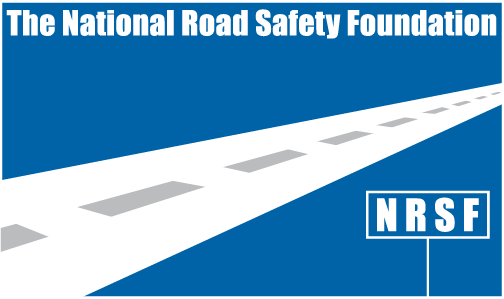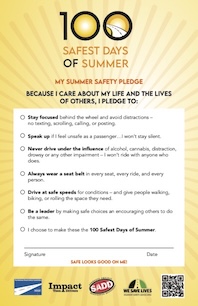100 Safest Days of Summer

What Are the 100 Deadliest Days and What Can You Do to Make them Safer?
The 100 days between Memorial Day and Labor Day, referred to as the 100 deadliest days, are nationally known as the most dangerous time for teen drivers. Studies by AAA indicate a sharp increase in fatal crashes with teen drivers behind the wheel. According to the CDC, teen drivers are three times more likely to be involved in a fatal car crash during this period.
That’s why the National Road Safety Foundation has teamed up with other safety and youth-based organizations to make this the 100 Safest Days of Summer and to stop these preventable crashes from happening.
Car crashes are the leading cause of death for American teens. And, during the 100 Deadliest Days, teens are 20% more likely to be involved in a fatal crash than they are during the rest of the year.
What makes this period so dangerous? And what can we do to make the 100 Deadliest Days safer?
There are several reasons why teen fatalities increase during the 100 Deadliest Days.
School is out and teens are spending more time behind the wheel.
The inexperience of teen drivers. Teenage drivers are almost three times as likely as older drivers to get in a car crash (based on miles driven, according to the Insurance Institute for Highway Safety).
Distracted driving accounts for 60% of teen crashes. Distraction includes but is not limited to multiple passengers, phones, and eating/drinking.
Speeding is another factor. 35% men 15-20 years old who were driving, speeding, and involved in fatal crashes in 2022. Of female drivers involved in fatal crashes, 17% were speeding.
Drunk driving. Even though the national drinking age is 21, some teens still drink and drive. In 2022, 30% of young drivers 15 to 20 years old who were killed in crashes had BACs of .01 g/dL or higher.
What You Can Do to Make the 100 Deadliest Days Safer
The good news is that there are many ways to make the roads safer during the busy summer season. Parents play a vital role, and we encourage them to be involved in their teen's driving habits.
A great way to put the focus on safe driving during this time is to take The Pledge! You can download it here (it is in English and Spanish) or go to 100safestdaysofsummer.org and take The Pledge there (a copy will be emailed to you).
Driver Safety Tips for Teens
- Piling passengers in your vehicle is not only distracting, but in most states, it's against the law. Follow the speed limit, pay attention to all road signs and traffic signals, and don’t follow the car in front of you too closely.
- Always wear your seatbelt. The CDC reports that “seat belts reduce the risk of death by 45%, and cut the risk of serious injury by 50%.”
- Don’t drink and drive. Ever.
- Get plenty of rest before getting behind the wheel. Every year, around 100,000 incidents of drowsy driving are reported, resulting in over 50,000 injuries.
- Focus on the road. Minimizing your distractions will ensure a safer ride!
Driver Safety Tips for Parents
- Talk to your teens. Explain the seriousness of the 100 Deadliest Days, and make sure your teen understands the rules (number of passengers allowed, curfew, zero-tolerance on texting while driving, etc).
- Model good driving behavior. You know children do what you do, not what you say. Teach them to be good drivers by being a good driver yourself.
- Consider a defensive driving course. Did you know that hands at “10 and 2” is no longer considered the proper driving position? Safe driving recommendations may have changed since you completed driver’s ed. A refresher course with up-to-date driving techniques will make you a safer driver and a better example to young drivers.
Our Passport to Safe Driving has tips and talking points to help parents have a discussion with their teens about safe driving behavior.




